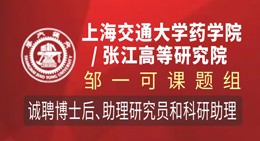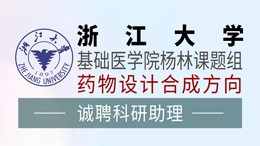The Breast ( IF 5.7 ) Pub Date : 2022-08-04 , DOI: 10.1016/j.breast.2022.07.014
Antoine Vasseur 1 , Matthieu Carton 2 , Severine Guiu 3 , Paule Augereau 4 , Lionel Uwer 5 , Marie-Ange Mouret-Reynier 6 , Christelle Levy 7 , Jean-Christophe Eymard 8 , Jean-Marc Ferrero 9 , Marianne Leheurteur 10 , Anthony Goncalves 11 , Marie Robert 12 , Thibault De La Motte Rouge 13 , Thomas Bachelot 14 , Thierry Petit 15 , Marc Debled 16 , Thomas Grinda 17 , Isabelle Desmoulins 18 , Laurence Vanlemmens 19 , Vincent Nicolaï 20 , Gaëtane Simon 21 , Luc Cabel 1
Background
Taxanes are one of the most effective chemotherapies (CT) in breast cancer (BC), but the efficacy of taxanes rechallenge in early metastatic relapse has been poorly studied in patients previously treated by taxanes in the (neo)adjuvant setting. Our study aimed to analyse the efficacy of taxane rechallenge in case of early metastatic relapse in a multicentre retrospective observational study compared with other chemotherapies.
Methods
We analysed the French national ESME metastatic BC (MBC) database and selected HER2- MBC patients who received CT in first-line treatment for a metastatic relapse occurring 3–24 months after previous (neo)adjuvant taxanes treatment.
Results
Of 23,501 female patients with MBC in ESME, 1057 met the selection criteria. 58.4% received a taxane-based regimen (75.4% concomitant bevacizumab) and 41.6% received other CT.
In hormone-receptor positive (HR+)/HER2- MBC, multivariate analysis showed no difference in OS between taxanes without bevacizumab compared to other CT (HZR = 1.3 [0.97; 1.74], but taxanes was significantly associated with worse PFS (HZR = 1.48 [1.14; 1.93]).
In TNBC, taxanes without bevacizumab and carboplatin/gemcitabine were not superior to other CT for OS (HZR = 1.07 [0.79; 1.44] and HZR = 0.81 [0.58; 1.13], respectively), while for PFS, taxanes was inferior (HZR = 1.33 [1.06–1.67]) and carboplatin plus gemcitabine was superior to other CT (HZR = 0.63 [0.46; 0.87]).
For both subtypes, the worse outcome observed with paclitaxel was no longer observed with the addition of bevacizumab.
Conclusions
With the limitation of retrospective design, taxanes rechallenge in early metastatic relapse of BC may result in a worse PFS in TNBC and HR+/HER2- MBC, which was not observed with the addition of bevacizumab.
中文翻译:

紫杉烷类药物在先前接受(新)辅助紫杉类药物方案治疗的 HER2 阴性乳腺癌患者早期转移性复发的一线治疗中的疗效:一项多中心回顾性观察研究
背景
紫杉烷是乳腺癌 (BC) 中最有效的化学疗法 (CT) 之一,但在先前在(新)辅助环境中接受紫杉烷治疗的患者中,紫杉烷再激发在早期转移性复发中的疗效研究很少。我们的研究旨在与其他化疗相比,在一项多中心回顾性观察研究中分析紫杉烷再激发对早期转移复发的疗效。
方法
我们分析了法国国家 ESME 转移性 BC (MBC) 数据库,并选择了接受 CT 一线治疗的 HER2-MBC 患者,这些患者在先前(新)辅助紫杉烷类药物治疗后 3-24 个月发生转移性复发。
结果
在 ESME 的 23,501 名女性 MBC 患者中,1057 名符合选择标准。58.4% 接受了基于紫杉烷的方案(75.4% 伴随贝伐单抗),41.6% 接受了其他 CT。
在激素受体阳性 (HR+)/HER2- MBC 中,多变量分析显示,与其他 CT 相比,不含贝伐单抗的紫杉烷类药物的 OS 无差异(HZR = 1.3 [0.97; 1.74],但紫杉烷类药物与更差的 PFS 显着相关(HZR = 1.48) [1.14;1.93])。
在 TNBC 中,没有贝伐单抗和卡铂/吉西他滨的紫杉烷在 OS 方面并不优于其他 CT(HZR = 1.07 [0.79; 1.44] 和 HZR = 0.81 [0.58; 1.13]),而对于 PFS,紫杉烷较差(HZR = 1.33 [1.06–1.67])和卡铂加吉西他滨优于其他 CT(HZR = 0.63 [0.46; 0.87])。
对于这两种亚型,加入贝伐单抗后不再观察到使用紫杉醇观察到的较差结果。
结论
由于回顾性设计的局限性,在 BC 的早期转移性复发中重新使用紫杉烷类药物可能会导致 TNBC 和 HR+/HER2-MBC 的 PFS 更差,而在加入贝伐单抗时未观察到这一点。



































 京公网安备 11010802027423号
京公网安备 11010802027423号